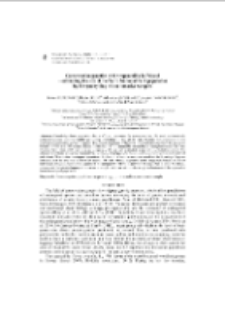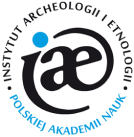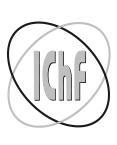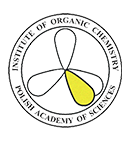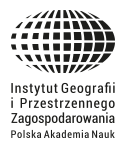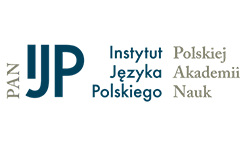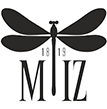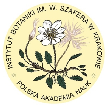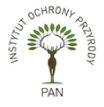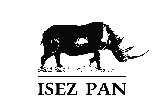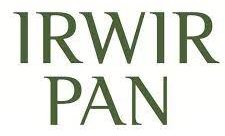
Object
Title: Conservation genetics of the capercaillie in Poland– estimating the size of the Tatra National Park populationby the genotyping of non-invasive samples
Creator:
Rutkowski, Robert ; Dulisz, Beata ; Szczepański, Sebastian ; Nowakowski, Jacek J. ; Zwijacz-Kozica, Tomasz ; Krzan, Piotr
Date issued/created:
Resource type:
Subtitle:
Capercaillie population in the Tatra NP, Poland ; Genetyka konserwatorska głuszca w Polsce – ocena wielkości populacji z Tatrzańskiego Parku Narodowego na podstawie genotypowania prób nieinwazyjnych
Publisher:
Muzeum i Instytut Zoologii Polskiej Akademii Nauk
Place of publishing:
Description:
Type of object:
Abstract:
Knowledge about population size is of high importance for conservationists. We used non-invasively collected samples and microsatellite genotyping to estimate the size of the Tatra National Park population of the endangered capercaillie Tetrao urogallus. This population is one of the most important strongholds of the species in Poland. In 2016 over 150 samples (faeces and feathers) of the capercaillie were collected throughout area of the Tatra National Park. Then, DNA was extracted and genetic profiles were evaluated, using nine microsatellite markers. We obtained 81 reliable genotypes. Among them, 34 unique genotypes were found, corresponding to Minimum Number of individuals Alive in the investigated population. Application of capture-recapture models in the R package Capwire indicated, that the area was inhabited by approx. 54 birds, whereas regression model suggested presence of 36–64 individuals. Previous field surveys suggested that the number of birds in the Tatra National Park is about 50. Hence, we assumed that genetic tagging of non-invasive samples performs well in estimating the abundance of the capercaillie in the investigated population.
References:
AMOS W. & BALMFORD A. 2001. When does conservation genetics matter? Heredity 87: 257–265; DOI:10.1046/j.1365-2540.2001.00940.x
BAJC M., ČAS M., BALLIAN D., KUNOVAC S., ZUBIĆ G., GRUBEŠIĆ M., ZHELEV P., PAULE L., GREBENC T. & KRAIGHER H. 2011. Genetic differentiation of the Western Capercaillie highlights the importance of South-Eastern Europe for understanding the species phylogeography. PLoS ONE 2011; 6, e23602; DOI: 10.1371/journal.pone.0023602.
BIRDLIFE INTERNATIONAL. Tetrao urogallus. The IUCN Red List of Threatened Species 2012. Available at: http://dx.doi.org/10.2305/IUCN.UK.2012-1.RLTS.T22679487A40101999.en (14 Jan 2016).
CAIZERGUES A., DUBOIS S., MONDOR G. & RASPLUS J-F. 2001. Isolation and characterisation of microsatellite loci in black grouse (Tetrao tetrix). Molecular Ecology Notes 1: 36–38; DOI: 10.1046/j.1471-8278.2000.00015.x
DESALLE R. & AMATO G. 2004. The expansion of conservation genetics. Nature Reviews. Genetics 5: 702–712; DOI: 10.1038/nrg1425
GOUDET J. 2001. FSTAT V2.9.3, a program to estimate and test gene diversities and fixation indices. Available at: http://www.unil.ch/izea/softwares/fstat.htlm
HAIG S. M., BRONAUGH W. M., CROWHURST R. S., D'ELIA J. D., EAGLES-SMITH C. A., EPPS C.W., KNAUS B.,MILLER M. P,MOSES M. L., OYLER-MCCANCE S., ROBINSON W. D. & SIDLAUSKAS B. 2011. Genetic applications in avian conservation. The Auk 128: 205–229; DOI:10.1525/auk.2011.128.2.205
HEDRICK P. W. 2001. Conservation genetics: Where are we now? Trends in Ecology and Evolution 16: 629–636; DOI: 10.1016/S0169-5347(01)02282-0
JACOB G., DEBRUNNER R., GUGERLI F., SCHMID B., & BOLLMANN K. 2010. Field surveys of capercaillie (Tetrao urogallus) in the Swiss Alps underestimated local abundance of the species as revealed by genetic analyses of non-invasive samples. Conservation Genetics 11(1): 33–44; DOI 10.1007/s10592-008-9794-8
KÉRY M., GARDNER B., STOECKLE T.,WEBER D. &ROYLE J. A. 2011. Use of Spatial Capture-Recapture Modeling and DNA Data to Estimate Densities of Elusive Animals. Conservation Biology 25(2): 356–364; DOI: 10.1111/j.1523-1739.2010.01616.x
KRISTENSEN T. N., PEDERSEN K. S., VERMEULEN C. J. & LOESCHCKE V. 2010. Research on inbreeding in the “omic” era. Trends in Ecology and Evolution 25: 44–52; DOI: 10.1016/j.tree.2009.06.014
LIUKKONEN-ANTTILA T., RATTI O., KVIST L., HELLE P. & ORELL M. 2004. Lack of genetic stucturing and subspecies differentiation in the capercaillie (Tetrao urogallus) in Finland. Annales Zoologici Fennici 41:619–643.
MÄKI-PETÄYS H., CORANDER J., AALTO J., LIUKKONEN T., HELLE P. & ORELL M. 2007. No genetic evidence of sex-biased dispersal in a lekking bird, the capercaillie (Tetrao urogallus). Journal of Evolutionary Biology 20: 865–873; DOI: 10.1111/j.1420-9101.2007.01314.x
MARTINEZ-CRUZ B. 2011. Conservation genetics of Iberian raptors. Animal Biodiversity and Conservation 34: 341–353.
MCCARTNEY-MELSTAD E. & SHAFFER H. B. 2015. Amphibian molecular ecology and how it has informed conservation. Molecular Ecology 24: 5084–5109; DOI: 10.1111/mec.13391
MIKOLÁŠ M., SVITOKC M., TEJKALE M., LEITÃOF P. J.,MORRISSEYA R. C., SVOBODA M., SEEDRE M&FONTAINE J. B. 2015. Evaluating forest management intensity on an umbrella species: Capercaillie persistence in central Europe. Forest Ecology and Management 354: 26–34; DOI: 10.1016/j.foreco.2015.07.001
MILLER C. R., JOYCE P. & WAITS L. P. 2005. A new method for estimating the size of small populations from genetic mark-recapture data. Molecular Ecology 14 (7): 1991–2005; DOI: 10.1111/j.1365-294X.2005.02577.x
MOLLET P., KÉRY M., GARDNER B., PASINELLI G. & ROYLE J. A. 2015. Estimating population size for Capercaillie (Tetrao urogallus L.) with spatial Capture-Recapture Models based on genotypes from one field sample. PLoS ONE 10 (6): e0129020; DOI: 10.1371/journal.pone.0129020
MORÁN-LUIS M., FAMELI A., BLANCO-FONTAO B., FERNÁNDEZ-GIL A., RODRÍGUEZ-MUÑOZ R., QUEVEDO M. & BAÑUELOS M. J. 2014. Demographic status and genetic tagging of endangered Capercaillie in NW Spain. PLoS ONE 9(6): e99799; DOI: 10.1371/journal.pone.0099799
MORIN P. A., MARTIEN K. K., ARCHER F. I., CIPRIANO F., STEEL D., JACKSON J. & TAYLOR B. L. 2010. Applied conservation genetics and the need for quality control and reporting of genetic data used in fisheries and wildlife management. Journal of Heredity 101: 1–10; doi: 10.1093/jhered/esp107
NEI M. 1978. Estimation of average heterozygosity and genetic distance from a small number of individuals. Genetics 89: 583–589.
PEAKALL R. & SMOUSE P. E. 2006. GenAlEx 6.0: genetic analysis in Excel. Population genetic software for teaching and research. Molecular Ecology Notes 6: 288–295; DOI: 10.1111/j.1471-8286.2005.01155.x
PEAKALL R. & SMOUSE P. E. 2012. GenAlEx 6.5: genetic analysis in Excel. Population genetic software for teaching and research-an update. Bioinformatics 28: 2537–2539; DOI: 10.1093/bioinformatics/bts460
PENNELL M.W., STANSBURY C. R.,WAITS L. I. &MILLER C. R. 2013. Capwire: a R package for estimating population census size from non-invasive genetic sampling. Molecular Ecology Resources 13: 154–157; DOI: 10.1111/1755-0998.12019
PETIT E. & VALIERE N. 2006. Estimating population size with noninvasive Capture-Mark-Recapture data. Conservation Biology 20: 1062–1073; DOI: 10.1111/j.1523-1739.2006.00417.x
PIERTNEY S. B. & HÖGLUND J. 2001. Polymorphic microsatellite DNA markers in black grouse (Tetrao tetrix). Molecular Ecology Notes 1: 303–304; DOI: 10.1046/j.1471-8278.2001.00118.x
RAYMOND M. & ROUSSET F. 1995. GENEPOP (version 1.2): population genetics software for exact tests and ecumenicism. Journal of Heredity 86: 248–249; DOI: 10.1093/oxfordjournals.jhered.a111573
REGNAUT S., CHRISTE P., CHAPUISAT M. & FUMAGALLI L. 2006a. Genotyping faeces reveals facultative kin association on capercaillie’s leks. Conservation Genetics 7: 665–674; DOI 10.1007/s10592-005-9097-2
REGNAUT S., LUCAS F. S. & FUMAGALLI L. 2006b. DNA degradation in avian faecal samples and feasibility of non-invasive genetic studies of threatened capercaillie populations. Conservation Genetics 7: 449–453; DOI 10.1007/s10592-005-9023-7
ROUSSET F. 2008. Genepop'007: a complete re-implementation of the Genepop software for Windows and Linux. Molecular Ecology Resources 8: 103–106; DOI: 10.1111/j.1471-8286.2007.01931.x
ROYLE J. A. & DORAZIO R. M. 2008. Hierarchical modeling and inference in ecology. Elsevier Academic, Press, Burlington, MA. 464 pp; DOI: 10.1016/B978-0-12-374097-7.50001-5
RUTKOWSKI R., KELLER M. & JAGOŁKOWSKA P. 2007. Populacje i podgatunki – genetyka molekularna w badaniach europejskich głuszcowatych Tetraonidae. Notatki Ornitologiczne 48: 260–274.
RUTKOWSKI R., KRZAN P. & SUCHECKA E. 2015. Charakterystyka genetyczna populacji głuszca w Tatrzańskim Parku Narodowym na tle innych karpackich populacji gatunku [Population genetic of Capercaillie from Tatra National Park in comparison with other Carpathian strongholds]. Pp. 47–52. In: CHROBAK A. & GODZIK B. (eds), Nauka Tatrom. Vol. 2. Nauki Biologiczne. Materiały V Konferencji „Przyroda Tatrzańskiego Parku Narodowego a Człowiek” Zakopane, 24–26.09.2015. Tatrzański Park Narodowy & Polskie Towarzystwo Przyjaciół Nauk o Ziemi, Oddział Krakowski, Zakopane 74 pp. [In Polish]
RUTKOWSKI R., NIEWĘGŁOWSKI H., DZIEDZIC R., KMIEĆ M. & GOŹDZIEWSKI J. 2005. Genetic variability of Polish population of the Capercaillie Tetrao urogallus. Acta Ornithologica 40: 27–34; DOI: 10.3161/068.040.0108
RUTKOWSKI R., ZAWADZKA D., SUCHECKA E. &MERTA D. 2017. Conservation Genetics of the Capercaillie in Poland – Delineation of Conservation Units. PLoS ONE 12 (4): e0174901; doi: 10.1371/journal.pone.0174901
SANIGA M. 2003. Causes of the population decline in Capercaillie (Tetrao urogallus) in the West Carpathians. - Biologia (Bratislava) 58: 265–273.
SANIGA M. 2011. Why the capercaillie population (Tetrao urogallus L.) in mountain forests in the Central Slovakia decline? Folia Oecologica 38: 110–117.
SARRE S. D. & GEORGES A. 2009. Genetics in conservation and wildlife management: A revolution since Caughley. Wildlife Research 36: 70–80; DOI: 10.1071/WR08066
SEGELBACHER G. 2002. Noninvasive genetic analysis in birds: testing reliability of feather samples. Molecular Ecology Notes 2: 367–369; DOI: 10.1046/j.1471-8286.2002.00180.x-i2
SEGELBACHER G., HÖGLUND J. & STORCH I. 2003. From connectivity to isolation: genetic consequences of population fragmentation in capercaillie across Europe. Molecular Ecology 12: 1773–1780; DOI: 10.1046/j.1365-294X.2003.01873.x
SEGELBACHER G., MANEL S. & TOMIUK J. 2008. Temporal and spatial analyses disclose consequences of habitat fragmentation on the genetic diversity in capercaillie (Tetrao urogallus). Molecular Ecology 17: 2356–2367; DOI: 10.1111/j.1365-294X.2008.03767.x
SEGELBACHER G., PAXTON R. J., STEINBRUCK G., TRONTELJ P. & STORCH I. 2000. Characterization of microsatellites in capercaillie Tetrao urogallus (AVES). Molecular Ecology 9: 1934–1935; DOI: 10.1046/j.1365-294x.2000.0090111934.x
SEGELBACHER G., WEGGE P., SIVKOV A. V. & HÖGLUND J. 2007. Kin groups in closely spaced capercaillie leks. Journal of Ornithology 148: 79–84; DOI: 10.1007/s10336-006-0103-3
SELKOE K. A. & TOONEN R. J. 2006. Microsatellites for ecologists: A practical guide to using and evaluating microsatellite markers. Ecology Letters 9: 615–629; DOI: 10.1111/j.1461-0248.2006.00889.x
STORCH I. 2007a. Conservation Status of Grouse Worldwide: an update. Wildlife Biology 13: 5–12; DOI: 10.2981/0909-6396(2007)13[5:CSOGWA]2.0.CO;2
STORCH I. 2007b. Grouse - Status Survey and Action Plan 2006-2010 IUCN. Gland Switzerland and Cambridge UK. and World Pheasant Association, Fordinbridge, UK. 112 pp.
TABERLET P., LUIKART G. & WAITS L. P. 1999. Noninvasive genetic sampling: Look before you leap. Trends in Ecology and Evolution 14 (8): 293–332; DOI: 10.1016/S0169-5347(99)01637-7
WILLIAMS B., NICHOLS J. D &CONROY M. 2002. Analysis and management of animal populations. Elsevier Academic Press, San Diego, CA. 817 pp.
ZWIJACZ-KOZICA T. & ZIĘBA F. 2017 (2015). Zwierzęta Tatrzańskiego Parku Narodowego w roku 2015. Wierchy 81: 196–202.
ZWIJACZ-KOZICA T. & ZIĘBA F. 2017 (2015). Zwierzęta Tatrzańskiego Parku Narodowego w roku 2015. Wierchy 81: 196–202.ŻUREK Z. & ARMATYS P. 2011. Występowanie głuszca Tetrao urogallus w polskich Karpatach Zachodnich – wnioski z monitoringu w latach 2005–2010 oraz końcowa ocena liczebności karpackich subpopulacji głuszca i cietrzewia [The occurence of Capercillie in Polish Western Carpathians – conclusions from the monitoring in the years 2005–2010 and the final assessment of the quantity of Carpathians subpopulations of Capercaillie and Black Grouse]. Studia i Materiały CEPL, Rogów 13 (2): 229–240. [In Polish]
Relation:
Volume:
Issue:
Start page:
End page:
Detailed Resource Type:
Format:
Resource Identifier:
oai:rcin.org.pl:64983 ; 10.3161/00159301FF2017.60.2.119
Source:
MiIZ PAN, call no. P.256 ; MiIZ PAN, call no. P.4664 ; click here to follow the link
Language:
Rights:
Creative Commons Attribution BY 3.0 PL license
Terms of use:
Copyright-protected material. [CC BY 3.0 PL] May be used within the scope specified in Creative Commons Attribution BY 3.0 PL license, full text available at: ; -
Digitizing institution:
Museum and Institute of Zoology of the Polish Academy of Sciences
Original in:
Library of the Museum and Institute of Zoology of the Polish Academy of Sciences
Access:
Object collections:
- Digital Repository of Scientific Institutes > Partners' collections > Museum and Institute of Zoology PAS > Scientific Journals
- Digital Repository of Scientific Institutes > Partners' collections > Museum and Institute of Zoology PAS > MIZ PAN Publications > Fragmenta Faunistica
- Digital Repository of Scientific Institutes > Literature > Journals/Articles
Last modified:
Nov 6, 2023
In our library since:
Mar 12, 2018
Number of object content downloads / hits:
722
All available object's versions:
https://rcin.org.pl/publication/84277
Show description in RDF format:
Show description in RDFa format:
Show description in OAI-PMH format:
Objects Similar
Szczepański, Sebastian Santorek, Anna Dulisz, Beata Żurek, Zbigniew Armatys, Paweł Rutkowski, Robert
Santorek, Anna Zwijacz-Kozica, Tomasz Dulisz, Beata Merta, Dorota Rutkowski, Robert
Rutkowski, Robert Polska Akademia Nauk. Muzeum i Instytut Zoologii.
Zwijacz-Kozica, Tomasz
Zwijacz-Kozica, Tomasz
Zwijacz-Kozica, Tomasz
Zięba, Filip Zwijacz-Kozica, Tomasz

 INSTYTUT ARCHEOLOGII I ETNOLOGII POLSKIEJ AKADEMII NAUK
INSTYTUT ARCHEOLOGII I ETNOLOGII POLSKIEJ AKADEMII NAUK
 INSTYTUT BADAŃ LITERACKICH POLSKIEJ AKADEMII NAUK
INSTYTUT BADAŃ LITERACKICH POLSKIEJ AKADEMII NAUK
 INSTYTUT BADAWCZY LEŚNICTWA
INSTYTUT BADAWCZY LEŚNICTWA
 INSTYTUT BIOLOGII DOŚWIADCZALNEJ IM. MARCELEGO NENCKIEGO POLSKIEJ AKADEMII NAUK
INSTYTUT BIOLOGII DOŚWIADCZALNEJ IM. MARCELEGO NENCKIEGO POLSKIEJ AKADEMII NAUK
 INSTYTUT BIOLOGII SSAKÓW POLSKIEJ AKADEMII NAUK
INSTYTUT BIOLOGII SSAKÓW POLSKIEJ AKADEMII NAUK
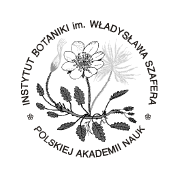 INSTYTUT CHEMII FIZYCZNEJ PAN
INSTYTUT CHEMII FIZYCZNEJ PAN
 INSTYTUT CHEMII ORGANICZNEJ PAN
INSTYTUT CHEMII ORGANICZNEJ PAN
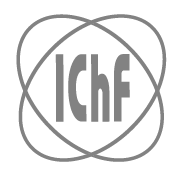 INSTYTUT FILOZOFII I SOCJOLOGII PAN
INSTYTUT FILOZOFII I SOCJOLOGII PAN
 INSTYTUT GEOGRAFII I PRZESTRZENNEGO ZAGOSPODAROWANIA PAN
INSTYTUT GEOGRAFII I PRZESTRZENNEGO ZAGOSPODAROWANIA PAN
 INSTYTUT HISTORII im. TADEUSZA MANTEUFFLA POLSKIEJ AKADEMII NAUK
INSTYTUT HISTORII im. TADEUSZA MANTEUFFLA POLSKIEJ AKADEMII NAUK
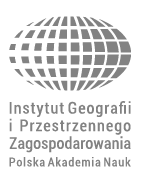 INSTYTUT JĘZYKA POLSKIEGO POLSKIEJ AKADEMII NAUK
INSTYTUT JĘZYKA POLSKIEGO POLSKIEJ AKADEMII NAUK
 INSTYTUT MATEMATYCZNY PAN
INSTYTUT MATEMATYCZNY PAN
 INSTYTUT MEDYCYNY DOŚWIADCZALNEJ I KLINICZNEJ IM.MIROSŁAWA MOSSAKOWSKIEGO POLSKIEJ AKADEMII NAUK
INSTYTUT MEDYCYNY DOŚWIADCZALNEJ I KLINICZNEJ IM.MIROSŁAWA MOSSAKOWSKIEGO POLSKIEJ AKADEMII NAUK
 INSTYTUT PODSTAWOWYCH PROBLEMÓW TECHNIKI PAN
INSTYTUT PODSTAWOWYCH PROBLEMÓW TECHNIKI PAN
 INSTYTUT SLAWISTYKI PAN
INSTYTUT SLAWISTYKI PAN
 SIEĆ BADAWCZA ŁUKASIEWICZ - INSTYTUT TECHNOLOGII MATERIAŁÓW ELEKTRONICZNYCH
SIEĆ BADAWCZA ŁUKASIEWICZ - INSTYTUT TECHNOLOGII MATERIAŁÓW ELEKTRONICZNYCH
 MUZEUM I INSTYTUT ZOOLOGII POLSKIEJ AKADEMII NAUK
MUZEUM I INSTYTUT ZOOLOGII POLSKIEJ AKADEMII NAUK
 INSTYTUT BADAŃ SYSTEMOWYCH PAN
INSTYTUT BADAŃ SYSTEMOWYCH PAN
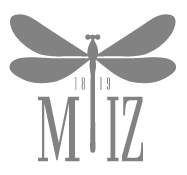 INSTYTUT BOTANIKI IM. WŁADYSŁAWA SZAFERA POLSKIEJ AKADEMII NAUK
INSTYTUT BOTANIKI IM. WŁADYSŁAWA SZAFERA POLSKIEJ AKADEMII NAUK
